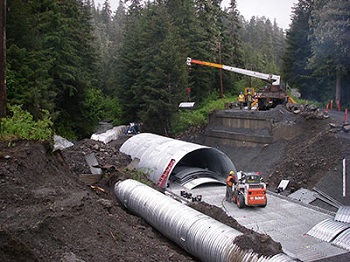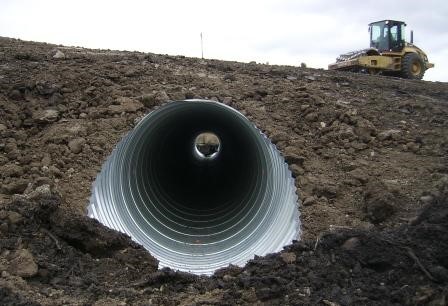Expert Culvert Installation for Resilient Infrastructure
Expert Culvert Installation for Resilient Infrastructure
Blog Article
Accomplish Success With Culvert Installation: Best Practices Exposed
In this conversation, we will certainly check out essential strategies, tips, and standards that can substantially influence the end result of culvert installments - Road construction. Understanding these key factors is paramount in guaranteeing the structural integrity and efficiency of culverts, making it necessary for specialists and fanatics alike to realize these fundamental principles.
Appropriate Material Option

Plastic culverts are lightweight, corrosion-resistant, and economical, making them a popular option for various culvert setups. Ultimately, selecting the correct product is vital to make certain the culvert system works effectively and has a long solution life (Road construction).
Website Prep Work Tips
Efficient website preparation is necessary for the effective setup of culverts, ensuring proper integration with the surrounding setting and long-lasting capability. Before beginning the installation process, it is crucial to conduct a detailed website assessment to figure out the suitable dimension, type, and positioning of the culvert. Cleaning the area of any type of debris, plants, or obstructions is the initial step in website prep work. This guarantees a tidy and degree surface for the culvert to be installed.
Following, the soil problems ought to be reviewed to examine the security and load-bearing capability of the ground. Depending upon the soil type, added procedures such as compaction or support may be required to avoid settling or changing of the culvert gradually. Appropriate drainage considerations must also be considered to stop water accumulation around the culvert, which can result in disintegration or structural damages.
Lastly, establishing correct accessibility to the site for building and construction devices and making sure conformity with any regulatory demands are crucial elements of site preparation. By adhering to these website prep work suggestions, the installation of culverts can be accomplished effectively and successfully, advertising the durability and performance of the culvert system.
Setup Techniques

To start with, it is vital to precisely measure and note the location where the culvert will certainly be mounted. The trench should be dug to the proper deepness and width, taking into account the dimension and kind of culvert being mounted.
Next, the culvert should be put in the trench adhering to the supplier's guidelines. Correct positioning is important for the capability and durability of the culvert. Backfilling the trench with the ideal material and compacting it in layers is the final step in the installation process. This makes sure the culvert is firmly in position and prepared to stand up to the needs it will face. By complying with these installment strategies diligently, the culvert will be successfully installed, adding to the overall success of the project.
Upkeep Standards
After finishing the mindful installation of culverts adhering to proper methods, adherence to upkeep standards is vital to ensure their durability and functionality. Routine assessment is vital like it to determine any indications of wear, blockages, or architectural damage beforehand. Assessments should include looking for sediment build-up, disintegration around the culvert sides, and any indicators of rust or corrosion. Clearing particles, such as branches or leaves, from the inlet and electrical outlet on a regular basis is necessary to stop clogs that can lead to flooding.
Furthermore, keeping appropriate slope and placement of the culvert is important for effective water circulation and to stop potential obstructing. Road construction. Any kind of plants near read the full info here the culvert should be managed to prevent root invasion and blockages. In areas vulnerable to freezing temperatures, applying winter upkeep methods such as making certain proper drainage to prevent ice build-up is critical
Normal maintenance not only prolongs the life expectancy of culverts yet also guarantees they work efficiently in managing water circulation, reducing the danger of damages to framework and surrounding areas.
Troubleshooting Common Issues
Addressing usual problems that may develop with culverts requires a systematic technique and cautious evaluation of the underlying causes. One constant issue come across is clogs within the culvert, usually triggered by debris buildup or debris build-up. To troubleshoot this problem, routine examinations and upkeep are vital to make certain correct functioning. Furthermore, improper installment bring about misalignment or poor slope can result in water circulation disturbances or perhaps architectural damage. By checking the culvert alignment and incline frequently, possible concerns can be determined and remedied immediately.

Final Thought
In conclusion, achieving success with culvert setup requires mindful factor to consider of product selection, extensive site preparation, correct installation strategies, and regular maintenance. By complying with ideal methods and repairing typical issues, the stability and capability of culverts can be made certain. It is necessary to abide by standards and referrals to protect against any possible concerns and make certain the longevity of the culvert system.
Report this page